As William Faulkner wryly reminds us,
“The past is
not dead. It is not even past.”
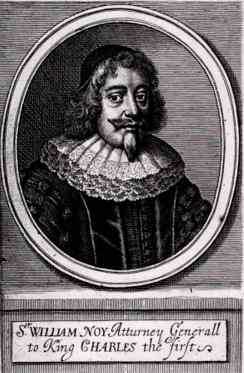 This entire passage from A. Judd Northrup's book with images added
This entire passage from A. Judd Northrup's book with images addedINTRODUCTION
It was at the height of the tyrannous reign of Charles the First, and the persecutions of Laud, the prelate of the English Church, who sought to exterminate Puritanism at the dissolution of the Parliament of 1629, that multitudes of Protestant non-conformists emigrated to America, seeking refuge in a country where they might have freedom of conscience and worship. The great emigration began in 1630, and continued until about 1640.
Among
these seekers for religious freedom were 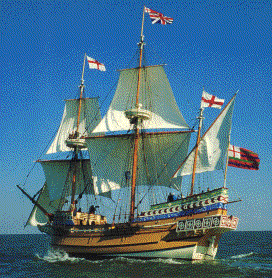 Eaton and Davenport's company,
"of good characters
Eaton and Davenport's company,
"of good characters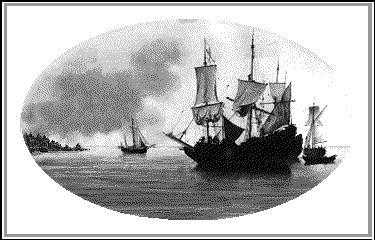 and fortunes." JOSEPH NORTHRUP, it is said
on good authority, was a member of that company. They came from England
in the ship "Hector and Martha," landing at Boston, July 26,
1637. The emigrants of that period were, in great part, men of the professional
and middle classes, some of them of large landed estate. The bulk, however,
were God-fearing farmers from Lincolnshire and Eastern counties. Eaton
and Davenport's company were mostly from Yorkshire, Hertfordshire and
Kent. It cannot now be determined from which county Joseph came-- perhaps
from Yorkshire; and if of Sir Richard Saltonstall's company, as it sometimes
has been asserted, this is highly probable.
and fortunes." JOSEPH NORTHRUP, it is said
on good authority, was a member of that company. They came from England
in the ship "Hector and Martha," landing at Boston, July 26,
1637. The emigrants of that period were, in great part, men of the professional
and middle classes, some of them of large landed estate. The bulk, however,
were God-fearing farmers from Lincolnshire and Eastern counties. Eaton
and Davenport's company were mostly from Yorkshire, Hertfordshire and
Kent. It cannot now be determined from which county Joseph came-- perhaps
from Yorkshire; and if of Sir Richard Saltonstall's company, as it sometimes
has been asserted, this is highly probable.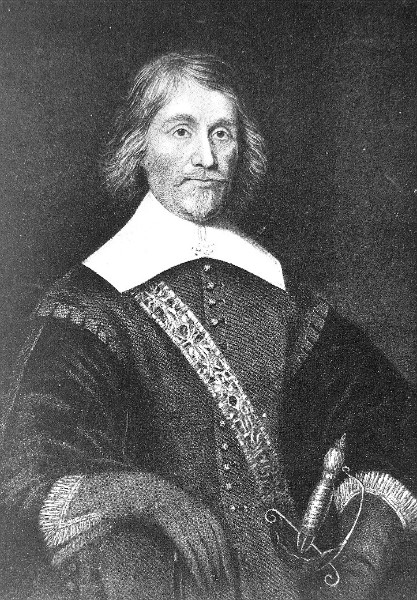
Sir Richard Saltonstall's company had spent some time at Wethersfield, Conn., having come there from Watertown, Mass., but later came to New Haven. The Eaton and Davenport Company, meanwhile, had sailed down the coast from Boston, in search of a good harbor, until they came to New Haven, where they found the object of their search, and remained at New Haven about a year. In 1639, members from both companies formed the settlement of Milford, Conn. The Hertfordshire and Yorkshire emigrants seem to have tended to Milford, while others went to Guilford. Rev. Peter Prudden, of the Saltonstall Company, whose wife was from Egton, Yorkshire, went to Milford. He was much beloved, and many Yorkshiremen followed him.
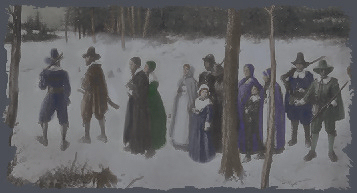 On
Nov. 29, 1639, the little company who had come to Milford from New Haven
signed a document which laid the foundation for their government of the
"plantation." It read: "Those persons whose names are hereunto
written are allowed to be Free Planters, having, for the present, the
liberty to act in the choice of public officers, for the carrying on of
public affairs in this plantation." Church membership was a condition
of admission as a "Free Planter." Forty-four persons signed
as such. Joseph Northrup, who was one of the company,
was not then a church member, but with nine others was permitted to sign
under the names of the full-fledged Free Planters. At a General Court
(town meeting), held Nov. 24, 1640, the place was named "Milford."
On Jan. 9, 1642, Joseph joined the First Church of Milford (organized
at New Haven, Aug. 22, 1639), just before they came to Milford), and thereby
became of right a member of that privileged class. He was married to Frances
Norton about 1647. He died Sept. 11, 1669, thirty
years after the settlement of Milford.
On
Nov. 29, 1639, the little company who had come to Milford from New Haven
signed a document which laid the foundation for their government of the
"plantation." It read: "Those persons whose names are hereunto
written are allowed to be Free Planters, having, for the present, the
liberty to act in the choice of public officers, for the carrying on of
public affairs in this plantation." Church membership was a condition
of admission as a "Free Planter." Forty-four persons signed
as such. Joseph Northrup, who was one of the company,
was not then a church member, but with nine others was permitted to sign
under the names of the full-fledged Free Planters. At a General Court
(town meeting), held Nov. 24, 1640, the place was named "Milford."
On Jan. 9, 1642, Joseph joined the First Church of Milford (organized
at New Haven, Aug. 22, 1639), just before they came to Milford), and thereby
became of right a member of that privileged class. He was married to Frances
Norton about 1647. He died Sept. 11, 1669, thirty
years after the settlement of Milford.
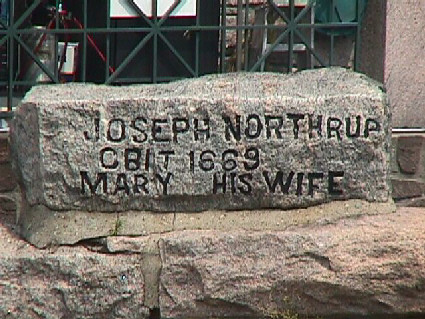
The Governor and company granted a Patent to Milford, dated May 22, 1713. The names of the Northrups, attached to the Patent (the original of which is in the handwriting of Jonathan Law, Esq., afterward Governor of Connecticut) in the order in which they signed, are as follows: John, son of Jeremiah; Zophar and Jeremiah, sons of Joseph; Jeremiah, Jr.; Joseph, James and Moses, sons of Joseph, Jr.; Amos and Joel, sons of Samuel; Daniel and William, sons of the first Joseph.
| The "Second Presbyterian Society" was formed in 1741-42, and was begun by members seceding from the First Church. They announced themselves to be Presbyterians according to the faith and practice of the Church of Scotland, and agreed on Nov. 30, 1741, to set up a separate society, in case the heads of thirty families would unite for that purpose. Accordingly, on the first Sunday in December 1741, a public meeting was held for them at the house of George Clark, Jr. On the last Tuesday in January, 1742, they qualified themselves before the County Court, according to the "English Act of Toleration," by taking the oath and subscribing to the declaration required by said Act, for worshiping God in a way separate from that by law established in the Colony. Among the signers was Josiah Northrup, son of Zophar, the fifth son of Joseph, the immigrant. |
THE NAME
The
name, Northrup--Northrop: Some effort has been made to find the name in
England, to determine its origin and proper spelling. Seven different
forms have been found. Maude, daughter of Simon Northrope, married in
County York, in the reign of Henry VII (1485-1509). Elizabeth Northrope
married April 21, 1669. William Northrope is mentioned in will, Dec. 20,
1485; Henry Northrope, 1489-90, in Beverly. Wills in York Registry give
names of Robert Northrope, 1591; Richard Northrope, 1611; George Northrope,
of Heaton, 1618; William Northrope, 1616; John Northrope, 1592; William
del Northrope, 1288-1294, on jury. All these names terminate in -rope.
No other forms appear in the York County records as far as examined. These
forms also appear elsewhere in England: Northorp, Northorpe, Northoppe,
Northrope, Northrop, Northropp, del Northrope.
I once found the name of Northrup, a "recusant"--the only instance I have found of that name in England.
A German family of St. Louis give their name Northrupp, as their father, who came from Germany, spelled it. This is a possible hint of the origin of the name "Northrup."
In the published official list of soldiers of the Revolution in Massachusetts, the following forms of the name appear: Northrup, Northrupt, Northrop, Northorp, Northroup, Nortrop, Northrip.
In the Yorkshire Parish Register, Vol. IX, appear the following: 1604, Northrop, Northrope; 1617, Northrope; 1649, Northrope; 1664, Northroppe.
The Hertfordshire records contain the names Northrope, Northroppe, Northropp (1599). Northorp appears in the Parish Registry of Horbury.
These facts show clearly that at least in York County and Hertfordshire the name, for a long period, has been Northrop, or Northrope. The other forms, -thorp, -op, -oppe, are evidently modifications of Northrop.
The name is a compound of North and the Saxon word thorp (appearing in such names as Althorp) and the Middle English thrope, meaning town or village. John of North-Thorpe became "John Northorpe." This was naturally changed, for ease of speaking it, to Northrope, or Northrop.
Winthrop and Lathrop are examples of the same change. The change to Northrup may have been a change to correspond to a manner of speaking the word "Northrop," or, in some parts of England the name in that form may have been common, or the change may have been arbitrarily made. I think, however, the original name in England--certainly in Yorkshire and Hertfordshire--was Northorpe, and then "Northrop." Whether this form ever prevailed in some parts of England, or was an arbitrary change made by Joseph, I have no opinion.
Joseph Northrup, the immigrant, called himself Northrup. In the early records and deeds of Milford he spelled his name Northrup. Land grants to him were to Joseph Northrup (Town Clerk's letter). In Barber's history of Connecticut he spells the name of Joseph Northrup. His son Joseph's tombstone bears the same name, and his sons, Moses, James and Joseph, who went to Ridgefield, and most of their descendants, spelled their names Northrup. This Moses made a will (which I have seen), in which the scribe who drew it gave his name as "Northrop," but Moses signed it "Northrup." I have no means of determining how the other sons of the first Joseph spelled their names (except that Samuel's family is said to have spelled the name -rup), nor how or how soon the form Northrop came into common use. A great effort has been made in the preparation of this Genealogy to make the form of the name correspond to the custom of the various families, but doubtless many mistakes have been made. The greater number of families spell the name Northrop. The Northrups are next in number.Northup is the name of the immigrant, Stephen Northup, who accompanied Roger Williams to Rhode Island in 1645, and his descendants do not appear in this book, although some have changed the name to Northrup and others to Northrop. They are not of the family of Joseph, the immigrant. I cannot account for the origin of the name in that form, nor have I any information from what part of England Stephen Northup came.
Northrip, or Nortrip (as I have seen it), is the name of but one family group, who settled in Ulster County, N. Y. I think it is a local modification of Northrop. They are not included in this book, as there is no way of showing that they are descendants of Joseph.
Perhaps this long dissertation upon the name is unimportant, but the subject has been much discussed, and some persons will be interested in the facts stated.
A word more, which perhaps should have been earlier said. I began my work almost wholly in the dark, and certainly with no comprehension of its difficulties and magnitude. I undertook to get the families, not only of Northrup, but also of Rhode Island Northups and their descendants. I accumulated a large amount of material, but difficulties arose which seemed insurmountable, and I abandoned the effort of getting the Northup family history. I hope some one of that branch will seriously undertake the task, and my material will be at his service.
Many members of the Northrup--Northrop family, of whatever name, served in all the important wars of the country, and especially in the Colonial wars, the Revolution, and the Civil War. An enumeration has been made, in an Appendix, of those in three States, who served in the Revolution, but not in other States or in other wars.
These early settlers began their life in America prompted by the highest motives, were "of good character," honest, industrious, patriotic and God-fearing. It will not be surprising to find multitudes of the same sort in the records of this book. They have swelled the ranks of good citizens; many, with honor, have well served their generation in the humbler walks of life; others have been prominent in the various professions, in legislative halls, as honored heads of educational institutions, in the courts of justice, on the bench, some reaching the highest places of ecclesiastical dignity, and many giving their patriotic service to their country on the battle-field, but the fundamental qualities of their sturdy and upright forefathers have been, I believe, their dominant characteristics in all these spheres of their activities and influence.
It would afford me great satisfaction, as I say the last word here, by special mention to extend my thanks and gratitude to the many of these family names, and others, who have aided me in this work, now brought to a close, but space forbids. I may mention, without being invidious, or seeming to forget others, a very few. The work of Merwin J. Northrop, of Waterbury, Conn., who labored for several years in the preparation of a Genealogy of the family, which was almost ready for publication when he died, about a year ago. He was a young man who almost seemed to have a passion for research, and gathered and arranged much valuable material. His father, Homer F. Northrop, kindly turned it all over to me, and I have used such material as I did not already possess. Nathan G. Pond, of Ridgefield, Conn., in his lifetime, and Mrs. Pond, since his death, have rendered me great and valuable service. Mr. and Mrs. Hosea B. Northrop, of Newtown, Conn., contributed a vast amount of family history of Connecticut families. It is impracticable to mention the hundreds out of the nearly thousand correspondents who aided me materially. The kindness of most of them in answering my sometimes persistent inquiries has won my warmest gratitude, and many of them seem like long-time and much-prized friends. To those named, and to these unnamed but not forgotten ones, my hearty thanks and kindest remembrances. I linger, looking back in memory, and think of this goodly company, and wish them, here and hereafter, "the best things."
A.
JUDD NORTHRUP
This passage copied in its entirety from THE
NORTHRUP-NORTHROP
GENEALOGY A
RECORD OF THE KNOWN DESCENDANTS OF JOSEPH NORTHRUP, WHO CAME FROM
ENGLAND IN 1637, AND WAS ONE OF THE ORIGINAL SETTLERS OF MILFORD,
CONN. IN 1639. WITH LISTS OF NORTHRUPS AND NORTHROPS IN THE REVOLUTION
~~~ BY A. JUDD NORTHRUP,
LL.D. OF SYRACUSE, NEW YORK
NEXT Joseph in Milford
1619 (or Christian Joseph) Joseph Northrup one of the founders of Milford born 1619 Wilkersfeld, Yorkshire Co.(?), England, or OR b. 1617 in Bradford,West Riding,Yorkshire, England FROM ROOTSWEB.COM immigrated (possibly from Bradford, Yorkshire Co. England) to America, July 26, 1637 aboard the "Hector and Martin"; one of "Eaton and Davenport" Co. ships.